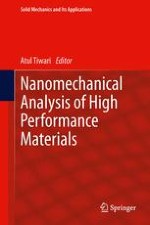2014 | OriginalPaper | Buchkapitel
Measurement of Hardness of Very Hard Materials
verfasst von : A. C. Fischer-Cripps
Erschienen in: Nanomechanical Analysis of High Performance Materials
Verlag: Springer Netherlands
Aktivieren Sie unsere intelligente Suche, um passende Fachinhalte oder Patente zu finden.
Wählen Sie Textabschnitte aus um mit Künstlicher Intelligenz passenden Patente zu finden. powered by
Markieren Sie Textabschnitte, um KI-gestützt weitere passende Inhalte zu finden. powered by
